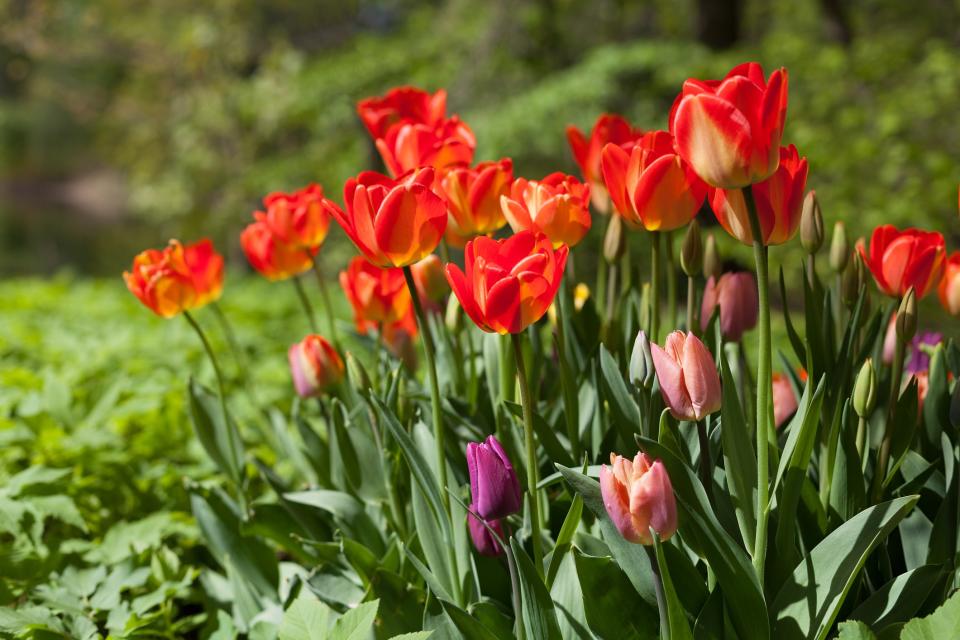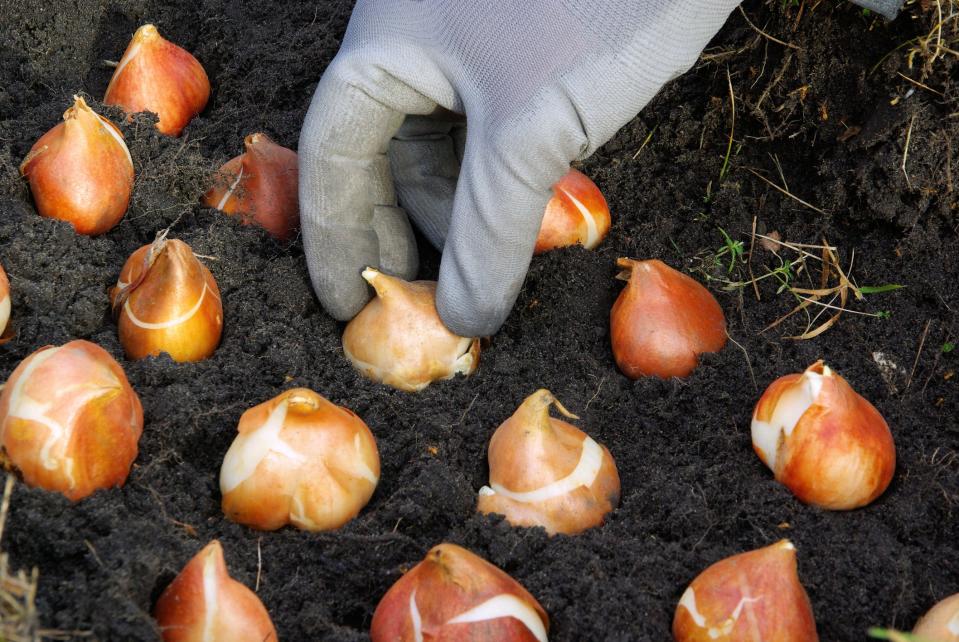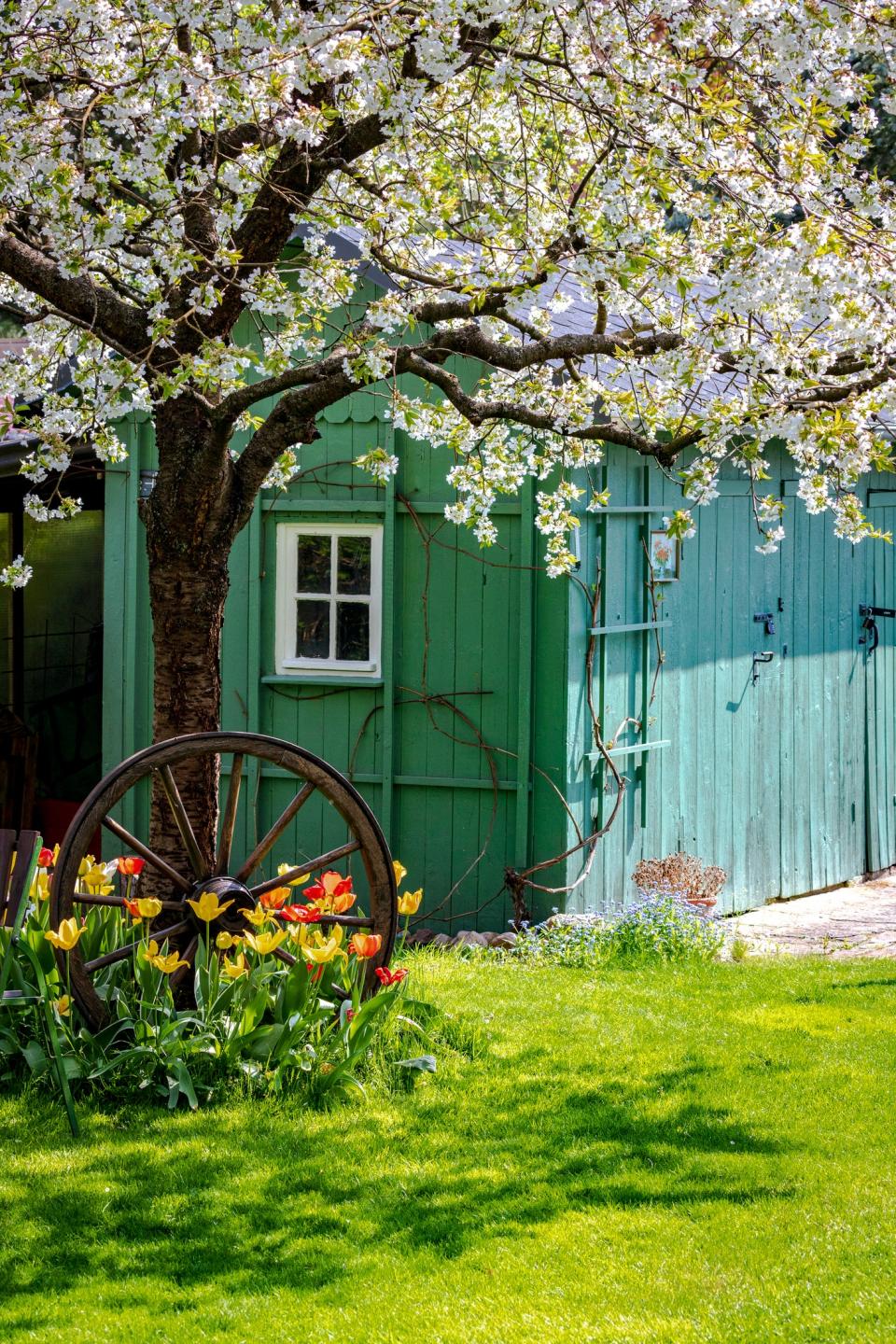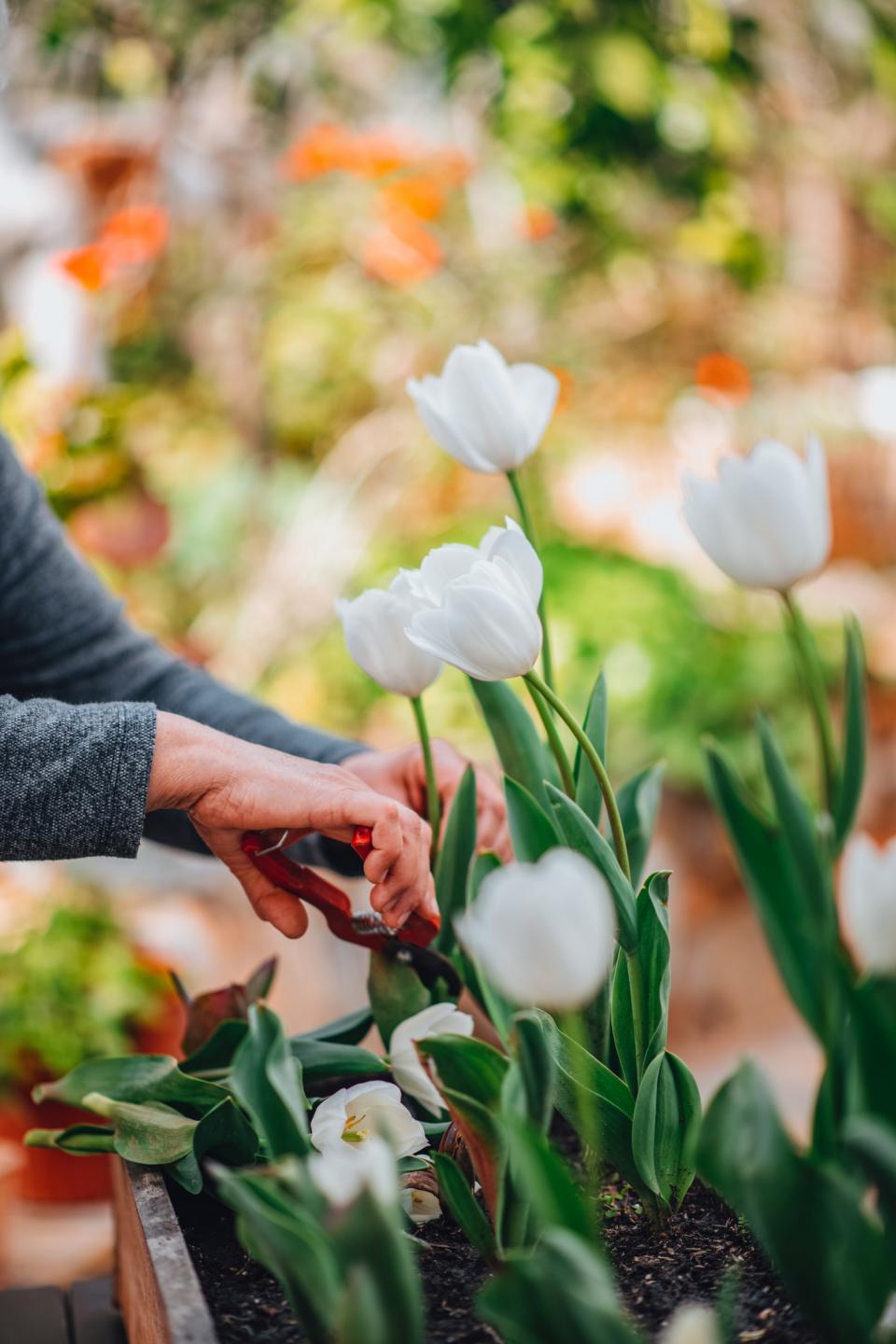When to Plant Tulip Bulbs: Everything You Need to Know About Growing the Classic Flowers

Illustration: Ellie Schiltz/Getty Images
Tulips have long been celebrated for their lively colors and beautiful blooms. So much so that centuries ago, Europeans—who didn’t know when to plant tulip bulbs or how to grow them—saw the Middle Eastern flower as a luxury item and would pay any amount to have one. This gave rise to “Tulip Mania.” But today, tulips don’t hail from just one seller. In fact, anyone anywhere can grow tulips. All you need to do is understand the flower’s special needs.

Spring tulips
The trick is knowing when to plant tulip bulbs. It’s a process many people might be confused about, according to horticulture specialist at Burpee Seeds, Nancy Trautz Awot. “Tulips must be planted in the fall,” she explains. Unlike other bulb plants like daffodils or hyacinths, tulips don’t need to wait until the after the last frost to be planted. Planting in the fall “allows them to undergo a period of dormancy during winter, which is essential for their growth and development,” Trautz Awot adds. No matter the climate or area you live in, tulips have to experience cold weather in order to produce spring blooms. “This process is known as vernalization.”
Of course, weather isn’t the only consideration, which is why we’ve consulted the experts and gathered simple steps for growing tulip bulbs successfully. Here, all you need to know about how to grow your own tulip garden in time for spring flowers.
When is the best time to plant tulip bulbs?
Tulips are spring-flowering bulbs, showing up in gardens around April and May. But as previously noted, “They’ll need to be planted in mid to late autumn, around the months of October, November, or December, for this to happen,” says gardening expert Petar Ivanov from Fantastic Gardeners, a garden service in London.
Why does it matter when I plant tulip bulbs?
The ideal time to plant tulips is October or November; however, warm climates can support tulip bulb plantings as late as December. Generally, fall is when the soil has cooled off enough from the summer heat, says Ivanov. “Otherwise, the flower bulbs can suffer from tulip fire which is a fungal disease that’s spread by wind and rain and is very bad during wetter seasons.” The plant will form stunted shoots and leaves along with unattractive brown spots. “If your tulips get affected by it, you’ll need to remove and burn them, and avoid planting new bulbs in the same spot for at least two years afterwards,” he says.
When to plant different types of tulip bulbs
There are many different varieties of tulip bulbs. Some of the major varieties of tulips include: triumph tulips, Darwin hybrids, parrot tulips, lily-flowered, and viridiflora. Tulips can also come in hybrids in every color minus true blue. Most tulip flowers offer cup-shaped blossoms with one bloom on each stem. Some are multiflowering. In short, you’ve got a lot of options.
Each flowers at a different bloom time, depending on when they’re planted. “My best tip for planting different varieties of tulip bulbs is to plant as many of them as possible at once to prolong their early spring display,” says Ivanov.

bulb planting
How to pick the right tulip bulb
To pick out the right bulb to plant, it’s important to recognize signs of health. “When you’re buying your tulip bulbs, make sure they are firm,” Ivanov says. “When you touch them, there should be no signs of mold on them.” Finally, try to buy the bulbs early at your garden center because the best quality bulbs will sell first, and anything remaining might not be good quality, he advises.
How to plant tulip bulbs
Step 1: Prepare the soil
“Before planting, prepare the planting area. Do this by loosening it to a depth of 12 inches,” says Trautz Awot. Next, remove any weeds or debris in the soil that could affect the tulip bulbs’ growth. “Then, add several inches of organic matter like compost.” Bone meal is another option.
In terms of soil pH levels, tulips prefer neutral to slightly acidic soil. Also be sure to check the soil quality, as tulips don’t like clay soil. According to Ivanov, “If you’re working with clay or sandy soil, you can improve it by adding a lot of organic matter before planting the bulbs.” Or, if you’re planting your tulip bulbs in pots instead, use a peat-free multipurpose compost, he says.
Most importantly, you want the soil to be damp—not too wet or dry. “When you’re planting tulip bulbs, you’ll need to provide them with damp and well-draining soil and a sunny but sheltered spot,” says Ivanov. Tulips favor fast-draining soil that doesn’t stay wet for too long. Too wet and the tulip bulbs can rot. On the other hand, if the soil is too warm and dry in the fall or winter seasons, the tulip bulbs can develop fungal disease.
Step 2: Plant in damp soil during autumn
In the fall, ideally around October or November, plant your tulip bulbs about six to eight inches deep. “A good rule of thumb is to plant the bulbs at a depth that is roughly three times their diameter,” says Trautz Awot. Put the bulb inside your freshly dug hole with the pointed side up and top-press the area with compost. “Make sure to plant each bulb in an individual planting hole with enough spacing around each one.”
Step 3: Water
After planting, there’s no need to soak the bulb with water. “Instead, water them well only once after planting and moderately in the spring,” says Ivanov. In spring, you can water once a week to help the flowers establish an elaborate root system. Ideally, the soil should stay damp but not soggy. Too soggy and the bulbs will rot; however, if the soil is too dry, the bulbs may fail to absorb enough nutrients to thrive.
Frequently Asked Questions
Do tulips grow better in sun or shade?

Cozy cottage in a country garden, Germany
Tulips grow best as perennials in environments with moist, cold winters—conditions found through most USDA zones three through eight. They prefer full sun but will tolerate part shade. Soil temperature doesn’t matter. “Generally, I’d recommend choosing a spot in your garden that will get full sun early in spring and has good drainage,” says Ivanov.
Tulip bulbs don’t thrive well in shade and excessive moisture, but shouldn’t be bombarded with rays either. To strike this balance, Ivanov recommends placing other perennial plants in front of tulips, as their foliage will protect the flowers from receiving too much sun. Alternatively, the flowers do well under shrubs that leaf out to provide shady conditions as the season warms up, helping extend the blooms.
How deep should tulip bulbs be planted?
Plant your tulip bulbs about six to eight inches deep. But make sure your tulip bulbs are at a depth that’s at least three times the height of the bulb, with the pointy end of the bulb up, adds Ivanov. “If you’re working with sandy soil, plant the bulbs a bit deeper to prevent them from drying out.”
Do you have to dig up tulip bulbs every year?
No. But if you do choose to dig them up, allow them to dry. “You can remove any dirt but do not wash them,” says Trautz Awot. “Once dry, store bulbs in a cool dry location with good air circulation.” You can then replant the bulbs next year in the fall.
You can also leave the bulbs in the ground, but don't expect them to flower again. “If the planting time is correct, most tulip varieties will flower only for one year and, because of that, many gardeners repeatedly plant new bulbs every autumn,” explains Ivanov. In other words, the flowers are kind of like annuals.
Once the tulips bloom, you can deadhead your flowers. “Typically, you can do that around June and July, and it will allow them to direct as much of their energy from their leaves to their bulbs.” Don’t cut back any of the tulip foliage until it has turned yellow. This will happen about six weeks after the tulips have flowered.

She Cuts Tulips For the Bouquet
Can I grow tulips if I live in a warm-winter climate?
Tulips need a cold period to activate their blooming potential. Anyone wanting to plant tulip bulbs in warmer climates, like those in the southern United States, will need to purchase pre-chilled bulbs to plant annually. In southern gardens, the planting and growing seasons for these plants will change, with tulips emerging in early January and blooming in early February.
If you live in an area with a warm winter climate, you can also dig up tulip bulbs after their foliage has died. Before the next fall season, prepare the bulbs by storing them in a refrigerator at temps below 40 degrees Fahrenheit. However, bulbs recycled this way won’t last long—maybe a few years at best.
How long do tulip bulbs last?
This all depends upon the variety. Some act as long-lived perennials, coming back every year. But many hybrid varieties will last two or three years at most.
Originally Appeared on Architectural Digest
More Great Stories From AD It Yourself
47 Kitchen Organization Ideas That Declutter Cabinets, Countertops, and More
The Cringiest DIY Trends According to TikTok’s Favorite Designers, Decorators, and DIY’ers
How to Propagate Pothos Plants at Home: A Step-by-Step Guide
Not a subscriber? Join AD for print and digital access now.
Browse the AD PRO Directory to find an AD-approved design expert for your next project.

